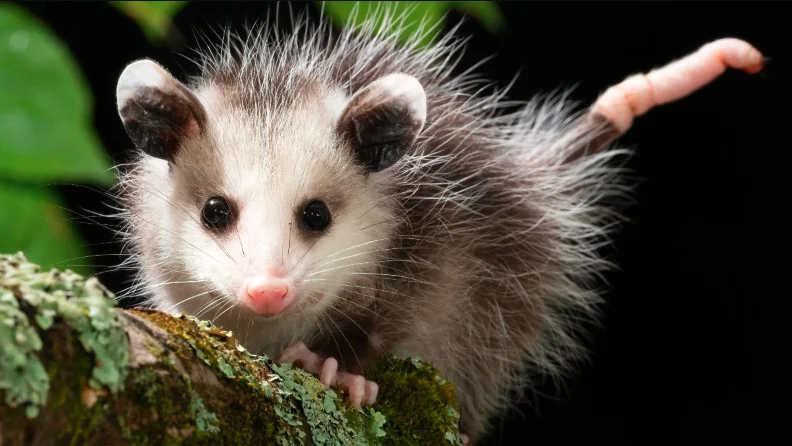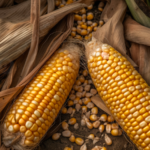Introduction
The tñacuache, commonly known as the opossum, is a fascinating creature native to the Americas. Often misunderstood, this nocturnal marsupial is a crucial part of the ecosystem, contributing to pest control, seed dispersal, and even cultural folklore. In this article, we will explore the tñacuache’s role in nature, its unique adaptations, and its cultural significance, offering a comprehensive look at one of nature’s most resilient survivors.
The Tñacuache’s Habitat and Adaptability
Tñacuaches are highly adaptable animals that can live in a wide range of habitats. Their geographical range extends from southern Canada to Argentina, meaning they can be found in forests, grasslands, and urban areas. This adaptability is a testament to their resilience, as they can thrive in diverse ecosystems, from untouched forests to the urban sprawl of cities.
Habitat Preferences
Tñacuaches prefer environments that provide shelter and food. In forests, they often seek shelter in hollow trees, tree branches, or dense underbrush. In more urbanized areas, however, they have become adept at scavenging food from garbage bins, dumpsters, and even compost piles. Their adaptability to human settlements has made them increasingly common in urban areas, where they find easy access to food.
Here is a summary of common tñacuache habitats:
| Habitat Type | Characteristics | Common Locations |
| Forests | Dense trees, hollow logs, and abundant food | North and South America |
| Grasslands | Open areas with shrubs and low vegetation | Central and South America |
| Urban Areas | Trash bins, gardens, and compost piles | Cities and suburbs worldwide |
This ability to thrive in various habitats has allowed the tñacuache to become one of the most versatile mammals on the continent.
The Role of Tñacuaches in the Ecosystem
Tñacuaches are essential members of the ecosystems they inhabit. As omnivores, their diet is varied, making them opportunistic feeders. They help keep the environment in balance by controlling pest populations and aiding in decomposition processes.
Diet and Feeding Behavior
Tñacuaches are opportunistic eaters, consuming a broad range of food items, including fruits, vegetables, small animals, insects, and carrion. This diverse diet not only helps keep pest populations in check but also aids in the breakdown of organic matter, contributing to nutrient recycling in the ecosystem.
- Fruits and Vegetables: Berries, apples, bananas, and other fruits are often a part of their diet.
- Insects: Beetles, crickets, and other small invertebrates are a primary source of protein.
- Carrion: Tñacuaches are known for scavenging dead animals, which helps in the decomposition process.
- Small Animals: Occasionally, tñacuaches will hunt small animals such as rodents and birds.
By consuming carrion, tñacuaches not only gain access to easy food sources but also contribute to the natural recycling of nutrients. Their role as scavengers plays a vital part in reducing waste in ecosystems.
Pest Control
One of the most important contributions of the tñacuache to the environment is its role in pest control. Tñacuaches are known to consume thousands of ticks and other parasitic organisms each year. This behavior helps reduce the population of ticks and limits the spread of diseases like Lyme disease. Their appetite for insects, including beetles and ants, also contributes to controlling the insect population, preventing infestations in agricultural areas and gardens.
Unique Adaptations of the Tñacuache
Tñacuaches have developed several remarkable adaptations that allow them to survive in the wild and avoid predators. These adaptations are key to their resilience and survival in diverse environments.
Playing Dead (Thanatosis)
One of the most well-known behaviors of the tñacuache is its ability to “play dead” when threatened by a predator. This phenomenon, known as thanatosis, involves the tñacuache collapsing and emitting a foul-smelling odor to mimic the scent of a decaying animal. By appearing dead, the tñacuache deters predators that would rather avoid the risk of eating something potentially toxic.
Prehensile Tail
The tñacuache’s tail is another unique feature. Unlike most mammals, its tail is prehensile, meaning it can be used like a fifth limb to help the animal grasp branches and maintain balance while climbing trees. This adaptation is particularly useful for foraging in high branches, where they can access fruits and avoid competition with ground-based animals.
Resistance to Rabies
Interestingly, tñacuaches are less susceptible to rabies than other mammals. Their lower body temperature inhibits the development of the rabies virus, making them less likely to contract and spread the disease. This makes tñacuaches an important part of the ecosystem, as they coexist with potential carriers of the disease without spreading it to other wildlife
Tñacuaches and Their Reproductive Behavior
The tñacuache has a unique reproductive cycle, which sets it apart from many other mammals. Their reproduction is fast-paced, allowing them to increase their population quickly in environments where food is abundant.
Gestation and Birth
Tñacuaches have one of the shortest gestation periods of any mammal, lasting just 12 days. After birth, the underdeveloped young, which are about the size of a pea, crawl into their mother’s pouch to continue their development. The pouch serves as a safe and warm environment where the babies grow for 2-3 months before leaving it.
Juvenile Development
Once the young leave the pouch, they remain in their mother’s care for a few more weeks, learning essential survival skills like foraging and avoiding predators. By the time they are 4-5 months old, the young tñacuaches become independent and are capable of surviving on their own. This rapid reproductive cycle helps the tñacuache maintain its population in the wild.
Tñacuaches in Folklore and Culture
In Latin American culture, particularly in Mexico, the tñacuache is often portrayed in folklore. It is a symbol of adaptability, survival, and intelligence. Stories frequently depict the tñacuache as a trickster figure, using its wits to overcome challenges.
Folklore and Symbolism
In some legends, the tñacuache is said to have stolen fire from the gods to share with humans, a story that emphasizes its resourcefulness and survival skills. In these stories, the tñacuache is often seen as a clever, sometimes mischievous figure that uses its wits to navigate difficult situations.
How to Coexist with Tñacuaches
While tñacuaches are beneficial for the ecosystem, they can sometimes cause problems in urban areas. Their scavenging behavior may lead them to raid trash cans or destroy garden plants. However, there are several simple steps you can take to minimize conflict with these creatures.
Tips for Coexisting
- Secure Trash Bins: Keep trash bins tightly sealed to prevent tñacuaches from rummaging through them.
- Remove Food Sources: Avoid leaving pet food or fruit outside overnight, as this may attract tñacuaches.
- Use Natural Repellents: Some natural substances, such as peppermint oil, can be used to deter tñacuaches from entering your property.
By taking these simple precautions, you can help reduce the likelihood of conflicts with tñacuaches while respecting their role in the environment.
Conclusion
The tñacuache is an essential species in the Americas, with a wide range of ecological benefits. From pest control and seed dispersal to their unique survival adaptations, they play a crucial role in maintaining ecosystem balance. Their cultural significance as a symbol of survival and intelligence further highlights the value of this remarkable marsupial. Understanding and respecting the tñacuache allows us to appreciate its contributions to the environment and coexist peacefully with this resilient creature.
FAQs
What is a tñacuache?
A tñacuache, or opossum, is a nocturnal marsupial that is found across the Americas, playing an important role in pest control and seed dispersal.
How does the tñacuache help the ecosystem?
The tñacuache controls pest populations, aids in decomposition, and contributes to seed dispersal, promoting ecosystem health.
Why do tñacuaches play dead?
Tñacuaches use thanatosis, or “playing dead,” to evade predators by appearing as lifeless and emitting a foul odor.
What do tñacuaches eat?
Tñacuaches are omnivores and eat fruits, insects, small animals, and carrion.
How can I keep tñacuaches away from my home?
Secure trash bins, remove food sources, and use natural repellents to deter tñacuaches from entering your property.
Are tñacuaches harmful to humans?
No, tñacuaches are generally harmless to humans, but they may occasionally scavenge food from urban areas.






